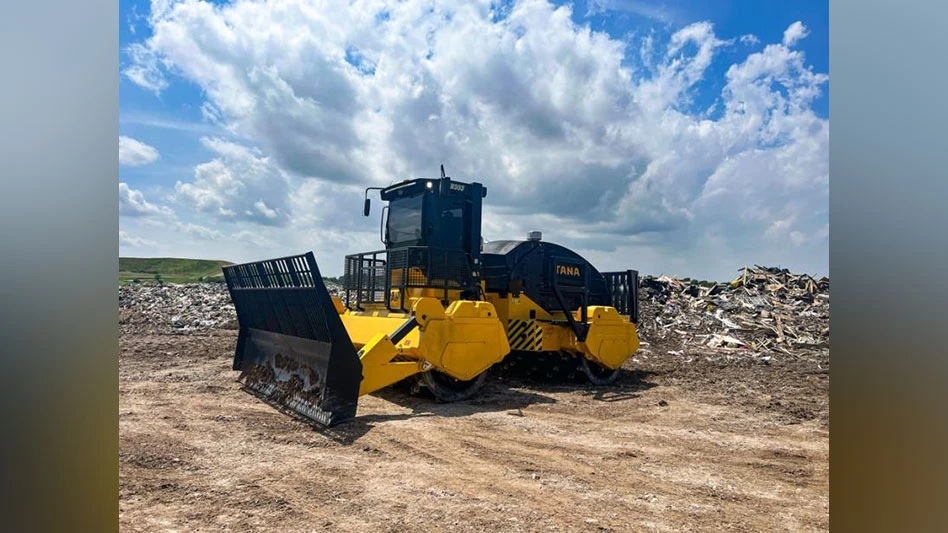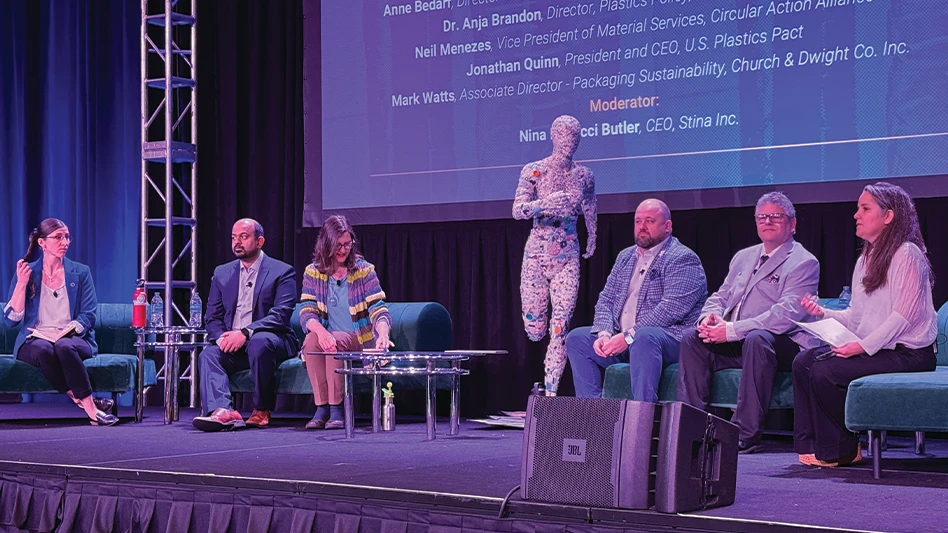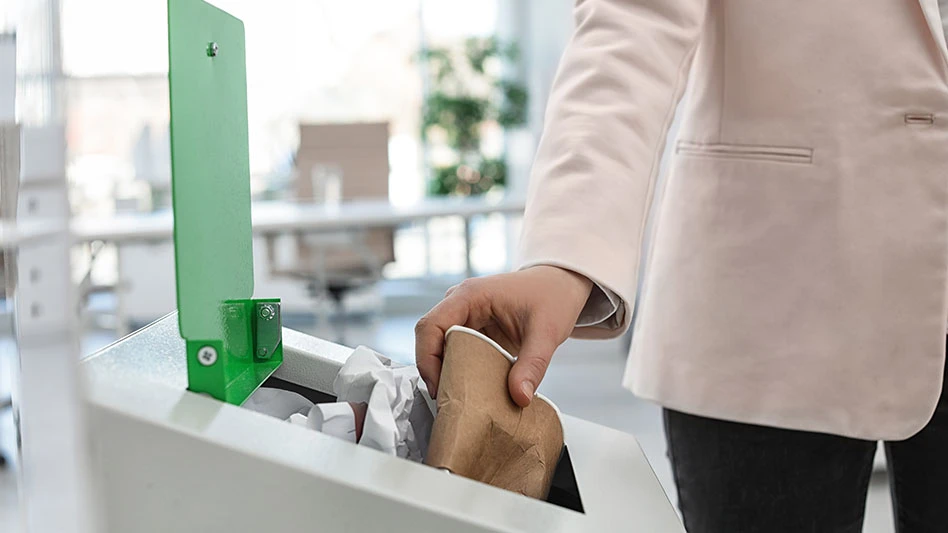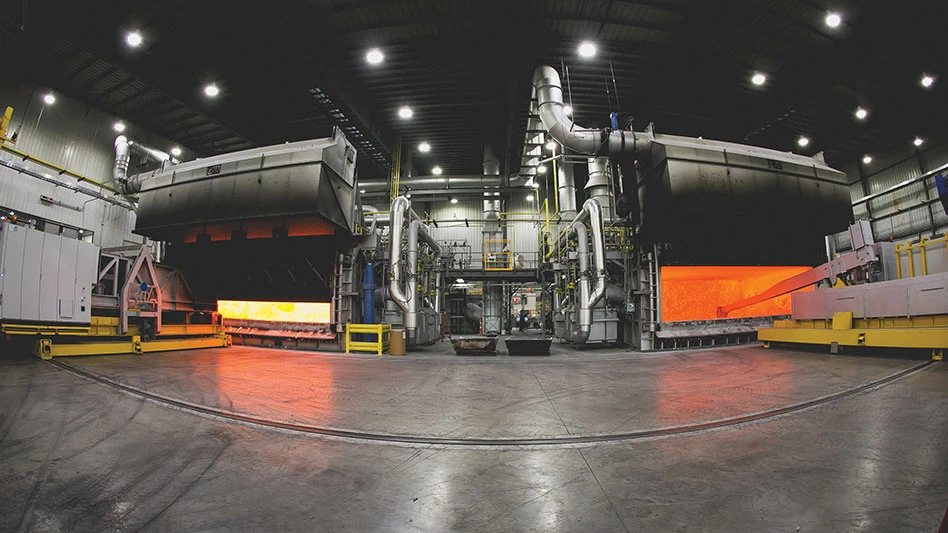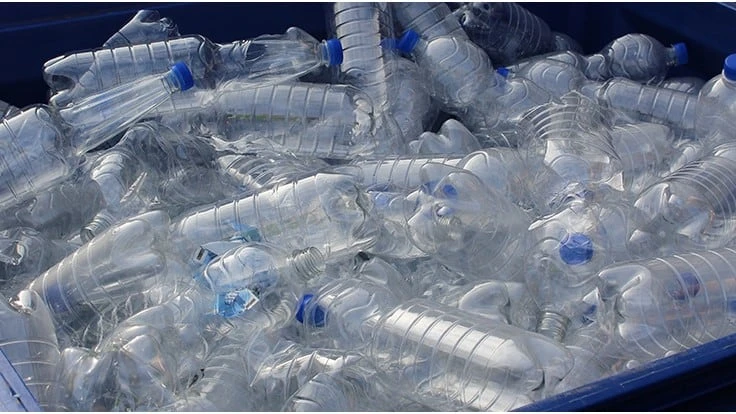
Closed Loop Partners’ Center for the Circular Economy has released its U.S. and Canada Recycling Infrastructure and Plastic Waste Map, a new tool that is part of the New York City-based company’s broader Advancing Circular Systems for Plastics and Packaging Initiative. Closed Loop Partners says the map “brings to light the diversity of plastic waste and the volumes and flows by country and state, highlighting critical opportunities to recapture valuable plastics and reincorporate them into manufacturing supply chains.”
Paula Luu, a director at Closed Loop Partners, says the firm began working on the map in April in partnership with Resource Recycling Systems (RRS), Ann Arbor, Michigan, and The Recycling Partnership, Falls Church, Virginia.
She says data for the map were sourced from a blend of reports in the market and proprietary market data from groups that included the American Chemistry Council, Washington; More Recycling, Sonoma, California; the Association of Plastic Recyclers, Washington; Deloitte, with U.S. headquarters in New York; the Environmental Protection Agency; the Container Recycling Institute, Culver City, California; RRS; and others.

© Closed Loop Partners
According to the analysis, the U.S. and Canada are sending 11.5 million metric tons, or nearly 12.7 million short tons, of plastic packaging to landfills annually. Only 18 percent of plastic packaging is being captured for recycling, despite growing demand for recycled content in plastic packaging. More than 250 brands and retailers in the U.S. have publicly committed to increase recycled content in their products and packaging, the firm says, yet the current supply of recycled plastics meets only 6 percent of the demand for the most common plastics in the U.S. and Canada.
“Indeed, our analysis indicates new demand for recycled plastics will go up by 5 to 7.5 million metric tons by 2030,” Luu says. “It is clear that it will take significant investments and improvements in our recycling systems to ensure that we can meet the demand for recycled content.”
The reason the project began by looking at plastic packaging, she says, is because it “is perhaps the most symbolic and visible manifestation of plastic waste in our day-to-day lives. It’s also the category of plastic that has the most data available in the market.”
She adds, “We chose to explore plastic packaging as a starting point to delve deeper into the different types of plastic, beyond packaging, that aren’t always spotlighted yet are equally challenging. These include bulky rigids, textiles and apparel with synthetic fibers and plastics from construction and health care industries, just to name a few.”
Closed Loop Partners says it has published this map to identify the magnitude of the challenge, the key infrastructure gaps and the areas of opportunity. “By increasing visibility across the plastics value chain, we can drive collaboration among diverse stakeholders—from policymakers and brands to plastics manufacturers and materials recovery facilities,” the firm says in the news release announcing the initiative.
The report highlights the diverse formats, applications and end-of-life markets for plastics, demonstrating the need for multiple solutions, according to Closed Loop Partners.
“The most interesting thing the tool has to offer is really going to depend on which geography and material is of interest to the user,” Luu says. “Every map and visualization is rich with data and key insights. For example, we found that there are 650,000 metric tons (716,502 short tons) of PET thermoforms in the U.S. and Canada. The Southeast has 18 percent of that volume alone.”
Mechanical recycling in the U.S. and Canada recaptures the value of 2,557 million metric tons of plastic packaging after final use per year, primarily from polyethylene terephthalate (PET) plastic bottles, according to the analysis. However, mechanical recycling is not an end-of-life solution for many other forms of plastic waste, like apparel, construction plastics, automotive applications and more, Closed Loop Partners says. This is where “advanced” recycling technology, such as chemical recycling, potentially could fill this gap, addressing these hard-to-recycle plastic-based products.
“We see transparency and measurement as critical first steps toward effective collaboration,” Luu says. “Knowing where materials recovery facilities are located, how much plastic waste is in circulation, what different types of plastic packaging exist and how these can map to populations helps reveal synergies between diverse stakeholders—from recyclers to brands to municipalities. Stemming plastic waste successfully requires a complete picture and understanding of the entire plastics value chain. Right now, we have a team within our Center for the Circular Economy who are leveraging this data to explore how different advanced recycling technologies can help address these unrecovered materials that are not currently captured by mechanical recycling technologies.”
According to Closed Loop Partners, “However, these [advanced] solutions still cannot serve all materials and markets perfectly or in perpetuity, and we must also deploy and scale reuse and rental systems, among others, to help extend the life of materials and reduce the overall volume of virgin plastic entering the market.”
Sponsored Content
Still relying on manual sorters?
Let AI do the heavy lifting. Waste Robotics delivers reliable, high-performance robots tailored for complex waste streams. They require minimal maintenance, are easy to operate, and are designed to boost your recovery rates. Smarter sorting starts with the right partner. Waste Expo Booth #1969 & REMA #2843
Click here to see our robots in action!The organization adds, “Without a multipronged approach, plastic waste in all forms, from various industries, will continue to grow.”
Kate Daly, managing director of the Center for the Circular Economy at Closed Loop Partners, says, “To efficiently and effectively tackle all plastic waste, we must first understand the volume and types of plastic flowing through our economy. Using plastic packaging as a starting point, this analysis helps investors, brands, entrepreneurs and policymakers understand the diversity of plastic waste in our system and make data-driven decisions. This tool helps galvanize stakeholders to accelerate our collective journey toward a circular economy for plastics through multiple plastic-waste mitigation strategies, and we call upon additional industries to share their data on plastic waste streams to shed light on the additional opportunities.”
Closed Loop Partners says it is working with groups across the U.S. and Canada to leverage additional data on other plastic materials, which it will add to this dataset to increase transparency and understanding of all types of end-of-life plastic flowing through current systems.
“Foundational to effective action and investment is an informed understanding of where, how much and what quality of plastic waste is being generated in the United States and Canada,” says Anne Johnson, principal and vice president of global corporate sustainability for RRS. “Packaging waste only scratches the surface of the plastic waste problem. Polyester textiles contribute to 13.4 billion pounds of landfill waste in the U.S. and require both traditional and new advanced recycling platforms to recapture their value after use. This data visualization tool can be built upon to shine a light on the full spectrum of plastic waste in existence today, providing much-needed transparency and collectively advancing a circular economy for plastics.”
Peylina Chu, executive director for the Healthcare Plastics Recycling Council, St. Paul, Minnesota, says, “We are excited to see this U.S. and Canada Recycling Infrastructure and Plastic Waste Map from Closed Loop Partners. As the health care industry looks for circular solutions for the millions of tons of clean health care plastic, this map helps set a precedent for collaborative efforts along the plastic value chain that can help efficiently identify and leverage synergies between healthcare plastics and other valuable scrap plastic streams as we all add data and share insights on this global waste challenge.”
Get curated news on YOUR industry.
Enter your email to receive our newsletters.
Latest from Recycling Today
- Unifi launches Repreve with Ciclo technology
- Fenix Parts acquires Assured Auto Parts
- PTR appoints new VP of independent hauler sales
- Updated: Grede to close Alabama foundry
- Leadpoint VP of recycling retires
- Study looks at potential impact of chemical recycling on global plastic pollution
- Foreign Pollution Fee Act addresses unfair trade practices of nonmarket economies
- GFL opens new MRF in Edmonton, Alberta



